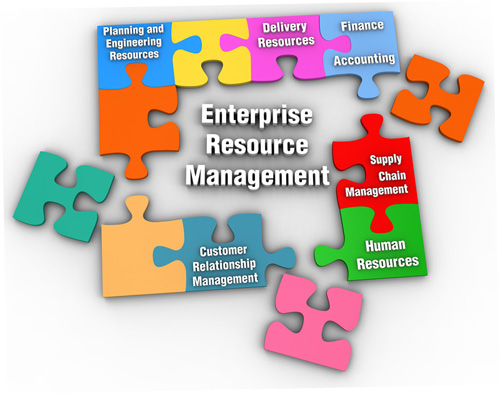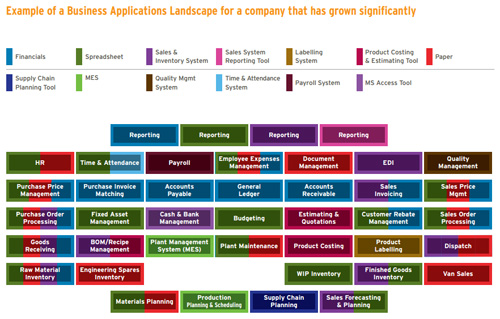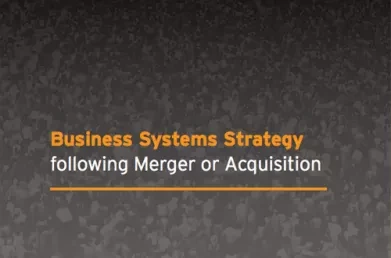The Impact of Business Growth on ERP Strategy: The Patchwork Quilt
The growth of a business without investing a corresponding level of thought and effort into systems strategies tends to produce a number of predictable and related effects. In Lumenia we call the first of these effects ‘The Patchwork Quilt’.

As the business grows, the requirement for systems to support various processes becomes more urgent. The needs may be internal to the organisation, with users and managers looking for additional tools to support them in doing their jobs, or external, based on demands from customers or regulators to comply. Typically the additional functionality that is needed is industry-specific or outside of the core financial and inventory transaction processing system, and in many cases the requirements are satisfied by point solutions. Such point solutions could be in-house developed, developed bespoke by a third party or commercial off-the-shelf solutions.
It is not unusual for demands for additional functionality to force knee-jerk reactions leading either to the purchase of new point solutions or the authorisation of significant modifications to existing systems. Often it is a case of those that shout loudest getting heard, where anything goes (as long as it can be justified at some level) since there is no coherent systems strategy. In most cases these point solutions are not integrated with any of the other applications used by the business.
The result is a business systems landscape where, potentially, a large number of systems are used and a diagram of the systems in use resembles a patchwork quilt.

This leads to a problem widely described as ‘islands of information’, with multiple applications in use but few (or none!) talking to each other. Among the problems associated with this scenario are widespread double-entry of data, difficulty in collating and reporting on data and a general lack of confidence in reports that are created by amalgamating data from multiple sources. From an IT management point of view it can mean multiple interfaces to maintain, multiple vendor relationships to manage and added complexity in applying change.
It is important to stress that point solutions aren’t necessarily a bad thing, or to be avoided: Best-of-Breed point solutions can make sense to support industry-specific processes that might not be elegantly executed in more broadly based systems like ERP. However, they are often implemented as standalone systems with little regard for how they should fit in to a business process where other systems also play a part. Point solutions are a perfectly acceptable approach in some cases (such as Payroll) but can certainly cause major problems in other instances (for example, Product Costing or Quotations Management), especially if not properly aligned and integrated with overall process flows.
Further effects of growth on business systems include ‘The Performance Slide’ and ‘The Information Gap’, and all three have negative consequences for a growing business.
This blog is an extract from Issue 2 of the Lumenia Executive Briefing Growing Pains: The impact of business growth on ERP Strategy.

This Lumenia Executive Briefing:
- Examines the Impact of business growth on ERP Strategy
- Discusses the effect of growth on business systems
- Identifies consequences for the business
- Provides direction in devising a systems strategy
- Clarifies the benefits of implementing ERP.
These Briefings are available to download in the Insights Section
This Blog was written by John Donagher, Principal Consultant at Lumenia. If you would like further information on the impact of business growth on ERP Strategy or on any other aspect of ERP please send an e-mail to John Donagher.


